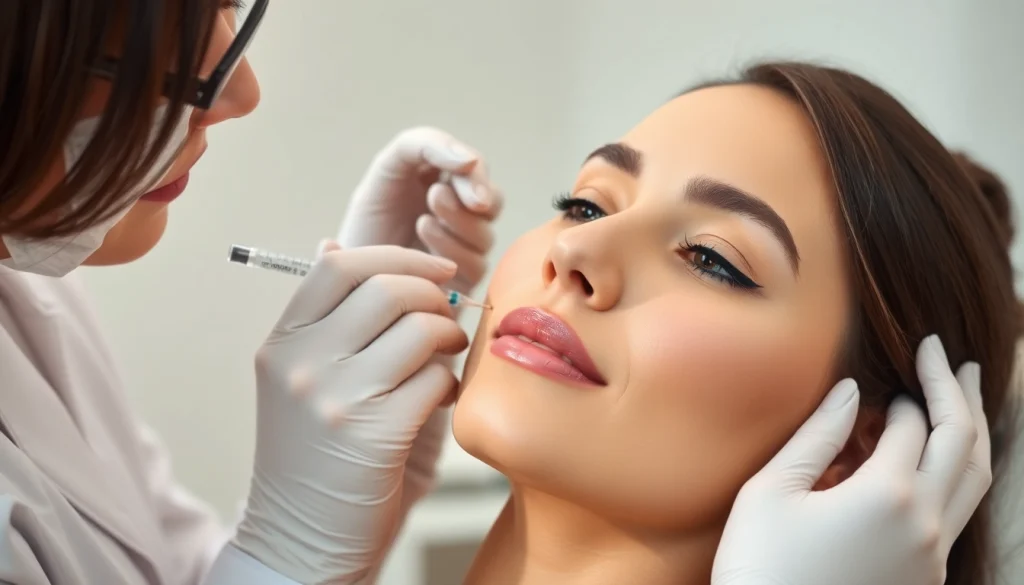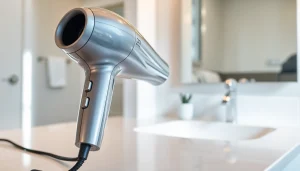Everything You Need to Know About Cheek Dermal Fillers: Benefits, Risks, and Results

Understanding Cheek Dermal Fillers
What Are Cheek Dermal Fillers?
Cheek dermal fillers are injectable substances used in cosmetic procedures to enhance the volume and contour of the cheeks. Typically composed of hyaluronic acid, a naturally occurring substance in the body, these fillers help in restoring youthfulness by diminishing hollowness and adding lift to the midface. Over time, factors such as aging, weight loss, and environmental stressors can lead to a decrease in facial volume, resulting in a sunken appearance. Cheek fillers address these concerns effectively, providing immediate results with minimal downtime, making them an attractive option for those seeking non-surgical enhancement options. The results from these injections can last from several months up to two years, depending on the type of filler used and individual metabolic factors. For a deeper insight into the benefits and procedures of cheek dermal fillers, continue reading.
Benefits of Cheek Fillers for Facial Aesthetics
Cheek fillers offer numerous aesthetic advantages. Here are some key benefits:
- Enhanced Volume: One of the primary aims of cheek fillers is to instantly restore lost volume, creating a more youthful and rejuvenated appearance.
- Improved Contour: Fillers can lift and sculpt the cheeks, helping to define the facial structure and improve overall symmetry.
- Natural Results: Modern fillers are designed to integrate with facial tissues, resulting in a natural appearance that enhances your innate beauty rather than altering it drastically.
- Minimally Invasive: As a non-surgical option, cheek fillers offer quicker recovery times compared to traditional procedures, with minimal pain and swelling.
- Customizable: The procedure can be tailored to the individual’s unique facial anatomy and aesthetic goals, ensuring personalized results.
Common Types of Cheek Fillers Available
There are various types of cheek fillers, each with distinct properties and benefits:
- Hyaluronic Acid Fillers: Popular for their natural feel and immediate results, these fillers can be dissolved with an enzyme if results are unsatisfactory.
- Calcium Hydroxylapatite Fillers: Often thicker and used for deeper injections, these are ideal for more significant volume restoration and can last longer than hyaluronic acid fillers.
- Poly-L-lactic Acid Fillers: This filler stimulates the body’s collagen production over time, providing gradual improvement and longevity in results.
- Polymethylmethacrylate (PMMA) Fillers: These are semi-permanent fillers that contain tiny beads which provide structural support but may carry a higher risk for complications.
The Procedure: What to Expect
Consultation Process with a Professional
The journey to achieving your desired aesthetic begins with an initial consultation. During this meeting, a qualified practitioner will assess your facial structure, skin quality, and overall health to determine the most suitable filler type and treatment approach. This is also a critical time to discuss your aesthetic goals, any previous cosmetic procedures, and any medical conditions or allergies you may have. A comprehensive evaluation ensures tailored treatment that aligns with your expectations.
Step-by-Step Overview of the Injection
Once you’ve agreed on a plan, the actual procedure typically follows these steps:
- Preparation: The area to be treated is cleansed, and a topical anesthetic may be applied to minimize discomfort.
- Marking: The practitioner will mark specific injection points to optimize the results and maintain symmetry.
- Injection: Using a fine needle or cannula, the filler is injected at the marked points. The practitioner may massage the area to ensure even distribution.
- Evaluation: After the filler is administered, the practitioner will assess the results and make any necessary adjustments.
Post-Procedure Care and Recovery Guidelines
Following the procedure, it’s essential to follow care guidelines to ensure optimal results:
- Avoid strenuous exercise and excessive sun exposure for at least 48 hours.
- Limit alcohol consumption to reduce the risk of swelling and bruising.
- Use cold compresses on the treated area to alleviate minor swelling or discomfort.
- Do not manipulate or massage the area excessively to allow the filler to settle appropriately.
- Follow-up with your practitioner if you experience any unexpected complications or have concerns about your results.
Potential Risks and Side Effects
Common Side Effects of Cheek Fillers
As with any cosmetic procedure, there are potential side effects associated with cheek fillers. These can include:
- Swelling at the injection site, which is common and usually subsides within a few days.
- Bruising, which can occur due to the needle penetrating small blood vessels.
- Redness or tenderness, both of which are typically temporary.
- Itching or rash may occasionally occur, particularly in those with sensitive skin.
Long-term Risks and Considerations
While many individuals enjoy a safe experience with minimal complications, certain risks warrant consideration:
- Infection, although rare, can occur, highlighting the importance of choosing a qualified professional.
- Allergic reactions to the filler ingredients, particularly if you have a history of sensitivities.
- Granulomas (lumps) can form in some cases, necessitating medical intervention.
- Unanticipated asymmetry or dissatisfaction with results may occur, prompting additional treatments.
When to Seek Medical Attention
While many side effects are manageable, it’s crucial to seek medical advice if you experience:
- An unusual degree of pain or discomfort that does not improve.
- Persistent swelling or redness that worsens.
- Visible lumps or bumps not resolving over time.
- Signs of infection, such as pus or fever.
Results: What You Can Expect
Immediate Effects and Longevity of Cheek Fillers
The results from cheek fillers can be immediate, with many patients noticing a marked difference as soon as the treatment is complete. The longevity of results varies based on the filler type; hyaluronic acid fillers may last from six months up to a year, while other types can provide benefits for up to two years or more. Individual factors such as metabolism, lifestyle, and skincare routine also play a crucial role in how long results endure.
Before and After: Real Patient Stories
Understanding the transformative potential of cheek fillers can be enhanced by examining real-life case studies. Many patients report heightened self-confidence and satisfaction with their appearance post-treatment. Before and after photographs typically demonstrate significant volume restoration, improved cheek definition, and rejuvenated facial aesthetics—providing compelling visual evidence of the filler’s effectiveness.
Maintaining Results: Tips for Longevity
To maximize and prolong the benefits of cheek fillers, adhere to the following tips:
- Stay hydrated: Proper hydration can improve skin elasticity and overall appearance.
- Adopt a gentle skincare routine: Using moisturizing products can help maintain skin texture and health.
- Avoid high sun exposure: Protecting the skin from UV rays can prevent premature aging effects that may counteract the results.
- Consider regular follow-ups: Scheduling maintenance treatments can ensure your results remain consistent over time.
Choosing the Right Provider for Cheek Fillers
Credentials to Look For in a Practitioner
Selecting a qualified provider is critical to achieving the desired outcome safely. Look for professionals such as board-certified dermatologists or plastic surgeons specialized in aesthetics. Verify their training, certifications, and experience with cheek fillers and ensure they have a portfolio of before and after results to review.
Evaluating Reviews and Case Studies
Researching patient experiences through reviews and case studies can be invaluable. Verify the provider’s credentials and observe the quality of results in previous patients. Look for testimonials praising their professionalism, results, and post-treatment care, as this can indicate their commitment to patient satisfaction.
Cost Considerations and Financial Options
The cost of cheek fillers can vary widely based on several factors, including the practitioner’s experience, the type of filler used, and geographical location. It’s essential to understand that while price is a factor, quality and safety should take precedence. Many providers offer financing options or payment plans to help patients comfortably manage treatment costs.






